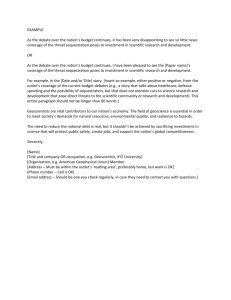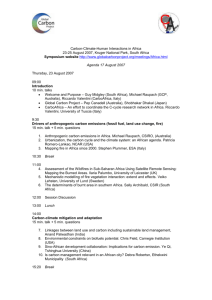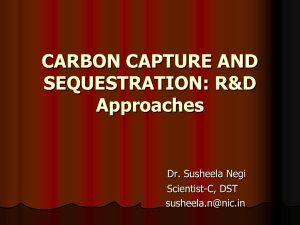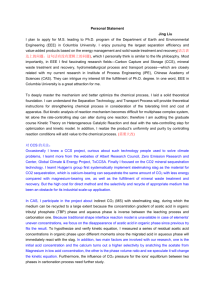MASSACHESUTS ISNTITUTE OF TECHNOLOGY FUNDAMNETALS OF ADVANCED ENEFRGY CONVERSION SPRING 04 HOMEWORK II
advertisement
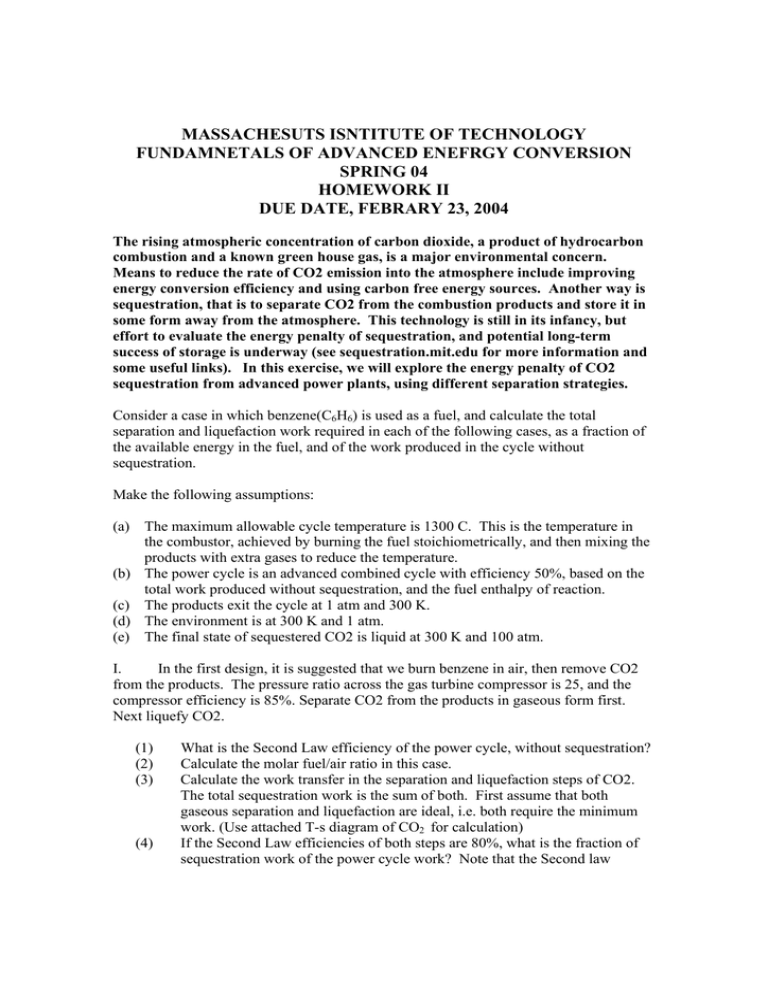
MASSACHESUTS ISNTITUTE OF TECHNOLOGY FUNDAMNETALS OF ADVANCED ENEFRGY CONVERSION SPRING 04 HOMEWORK II DUE DATE, FEBRARY 23, 2004 The rising atmospheric concentration of carbon dioxide, a product of hydrocarbon combustion and a known green house gas, is a major environmental concern. Means to reduce the rate of CO2 emission into the atmosphere include improving energy conversion efficiency and using carbon free energy sources. Another way is sequestration, that is to separate CO2 from the combustion products and store it in some form away from the atmosphere. This technology is still in its infancy, but effort to evaluate the energy penalty of sequestration, and potential long-term success of storage is underway (see sequestration.mit.edu for more information and some useful links). In this exercise, we will explore the energy penalty of CO2 sequestration from advanced power plants, using different separation strategies. Consider a case in which benzene(C6H6) is used as a fuel, and calculate the total separation and liquefaction work required in each of the following cases, as a fraction of the available energy in the fuel, and of the work produced in the cycle without sequestration. Make the following assumptions: (a) The maximum allowable cycle temperature is 1300 C. This is the temperature in the combustor, achieved by burning the fuel stoichiometrically, and then mixing the products with extra gases to reduce the temperature. (b) The power cycle is an advanced combined cycle with efficiency 50%, based on the total work produced without sequestration, and the fuel enthalpy of reaction. (c) The products exit the cycle at 1 atm and 300 K. (d) The environment is at 300 K and 1 atm. (e) The final state of sequestered CO2 is liquid at 300 K and 100 atm. I. In the first design, it is suggested that we burn benzene in air, then remove CO2 from the products. The pressure ratio across the gas turbine compressor is 25, and the compressor efficiency is 85%. Separate CO2 from the products in gaseous form first. Next liquefy CO2. (1) (2) (3) (4) What is the Second Law efficiency of the power cycle, without sequestration? Calculate the molar fuel/air ratio in this case. Calculate the work transfer in the separation and liquefaction steps of CO2. The total sequestration work is the sum of both. First assume that both gaseous separation and liquefaction are ideal, i.e. both require the minimum work. (Use attached T-s diagram of CO2 for calculation) If the Second Law efficiencies of both steps are 80%, what is the fraction of sequestration work of the power cycle work? Note that the Second law (5) (6) efficiency for separation and liquefaction is the ratio between the minimum work required and the actual work required. What thermodynamic processes should be used in liquefaction to achieve ideal minimum work? Why are these ideal minimum work processes difficult to achieve in practice? What processes would you use instead in liquefaction, and why do they require more work? How would you modify these more practical liquefaction process to bring them closer to the ideal processes, and what additional cost is needed to achieve those modifications? II. It has been proposed (see attachment) that separating nitrogen from air before burning is perhaps more economical, since in this case the products of combustion are only CO2 and O2. Repeat the calculations for the separation and liquefaction work, and compare the results with the first case. Note that in this case, some of O2 is circulated in the cycle to keep the maximum temperature at 1300 C. Separating N2 before combustion may have some emissions benefits. III. Yet another proposal is to burn in air, at atmospheric pressure, but use a catalytic combustion unit so that the products of combustion in this case are limited to CO2+N2+H2. Next CO2 is separated isothermally at the products temperature, and the H2+N2 mixture is used in a fuel cell to produce electricity directly. Calculate the total sequestration work in this case, and compare with the previous two cases.. (Courtesy of Prof. Steven Penoncello, Professor of Mechanical Engineering. Used with permission.)



